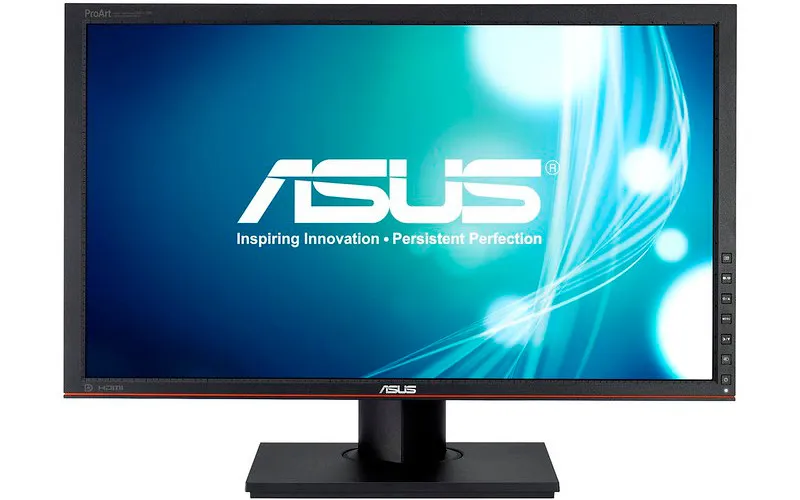You’re not alone if you’re experiencing the “VGA no signal” error message on your Asus monitor. It can be frustrating to deal with this issue, especially when trying to finish some work or enjoy your favorite game or movie. But don’t worry. I’m here to help!
In this article, we’ll discuss the possible causes of the error, troubleshooting steps you can take, and more advanced solutions to get your monitor up and running again.
So, let’s get started and fix this problem together!
Possible Causes of VGA No Signal Error
There are several reasons why your Asus monitor may display the “VGA no signal” error message. One of the most common causes is loose connections. This means that the VGA cable connecting your monitor to your computer may not be properly plugged in or damaged.
Another possible cause is a faulty cable. Your VGA cable may be damaged or broken, which can cause the “no signal” error message to appear.
Outdated drivers can also cause this issue. If your VGA drivers are outdated, your monitor may not be able to display the signal from your computer correctly. Additionally, hardware issues with your monitor or graphics card can cause this error message to appear.
A malfunctioning graphics card, for example, may not be sending a proper signal to the monitor, resulting in the “no signal” error.
These are just a few possible causes of the “VGA no signal” error message on your Asus monitor. By identifying the cause of the problem, you’ll be one step closer to resolving it and getting your monitor back in working order.
How to Fix Asus Monitor VGA No Signal
1. Reset the monitor
- Turn off your monitor.
- Unplug the power cord from the monitor.
- Wait for a few minutes.
- Plug the power cord back in and turn on your monitor.
- Check if the error message is gone.
2. Check the VGA cable
- Turn off your computer and monitor.
- Inspect the VGA cable to ensure it’s not damaged.
- Disconnect and reconnect the cable on both ends.
- Turn on your monitor and computer to check if the error message is gone.
3. Use a different VGA cable
- Borrow a VGA cable from a friend or family member.
- Replace your current VGA cable with the borrowed one.
- Turn on your monitor and computer to see if the error message is gone.
4. Update your VGA drivers
- Go to your computer’s or graphics card manufacturer’s websites.
- Search for the latest VGA drivers for your computer or graphics card model.
- Download and install the drivers.
- Restart your computer and monitor to see if the error message is gone.
5. Check the monitor’s input settings
- Press the “Input” button on your monitor.
- Select “VGA” as the input source.
- Check if the error message is gone.
6. Use a different port
- If your graphics card has multiple VGA ports, try plugging the VGA cable into a different port.
- Turn on your monitor and computer to see if the error message is gone.
7. Update your BIOS
- Go to your computer’s manufacturer’s website.
- Search for the latest BIOS update for your computer model.
- Download and install the BIOS update.
- Restart your computer and monitor to see if the error message is gone.
8. Check your graphics card
- Open your computer case.
- Check if your graphics card is properly seated in the slot.
- If not, carefully remove it and reseat it in the slot.
- Turn on your computer and monitor to see if the error message is gone.
9. Reset your graphics card
- Turn off your computer and monitor.
- Remove the graphics card from the slot.
- Clean the contacts with a soft, dry cloth.
- Reinsert the graphics card into the slot.
- Turn on your computer and monitor to see if the error message is gone.
10. Check your power supply
- Check if your power supply is providing enough power to your graphics card.
- If it’s not, consider upgrading your power supply.
11. Seek professional assistance
- If none of the above solutions work, it may be a hardware issue with your monitor or graphics card.
- Take your computer or monitor to a professional technician for assistance.
Make sure you take safety precautions when handling hardware components. If you don’t feel comfortable fixing the “VGA no signal” error on your Asus monitor, it’s best to get help from a professional. These steps will help you fix the error and get your monitor working correctly.
Conclusion
Dealing with the “VGA no signal” error message on your Asus monitor can be a frustrating experience. However, following the troubleshooting and advanced solutions outlined in this article, you can identify and resolve the issue causing the error message.
It’s essential to check your VGA cable, update your drivers, and verify your monitor’s input settings as simple solutions to the issue. If these basic steps do not work, you can try more advanced solutions like checking your graphics card or power supply.
It is also essential to take necessary safety precautions when working with hardware components and seek professional assistance if you’re uncomfortable performing advanced solutions.
By diagnosing and fixing the issue, you can save yourself the hassle of replacing your monitor or graphics card altogether. Remember, if you’re still experiencing the “VGA no signal” error message after following these steps, don’t hesitate to seek professional help from a qualified technician.






